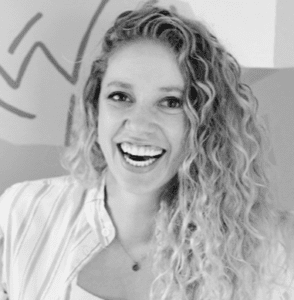Are you looking for a way to get to know your kindergarten artists and for them to get to know art? Try starting the year with mixed media self-portrait collages!
It’s a beautiful way to personally connect to your students and give them a chance to experiment with lots of different art materials. This is especially important if you haven’t had any interaction with this group of students yet, as the school year has just begun. The best part is that this project encourages students to see themselves as artists, which is why this project is best introduced to students as “I am an artist!” Self-Portraits.

Self-portraits are the perfect way to help your kindergarten artists shine!
Of course, this lesson can be easily adapted for different grade levels. You can also find modern artists who use lots of line and pattern to tie into this lesson, making connections to the art world outside your classroom. A few artists who would make a great pairing with this lesson would be Janet Skates, Romero Britto or Ellen Richman.
Here’s how to start:
Step 1: Draw lines
Use a variety of lines and draw them from edge to edge of their paper with oil pastels. Having lines span across the paper encourages these young students to practice composition and filling the space.
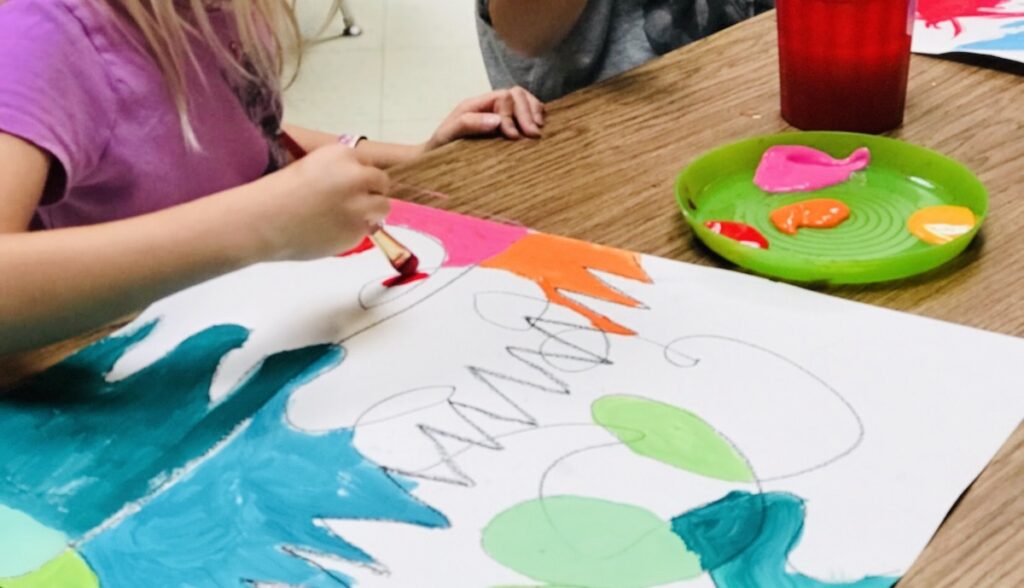
Step 2: Paint
To explore color mixing, have students paint in each shape created from the overlapping lines with a different color. No two similar colors should touch the same edges, and artists should continue to paint the paper until there is no white space.

When a student finishes painting all the white space on their artwork, encourage them to be a “master painter” and bring their brush over to another working friend and say, “I’m a master painter! Would you like help painting?” This “master painter” technique works like a dream to help artists who may work at a slower pace while also encouraging teamwork among classmates.
Step 3: Photograph
While students are working on their first few steps independently, photograph student artist photos. You can simply use your phone or a digital camera. Taking three photos will allow students to show their personality. Also, encourage your students to select a prop like an oversized paintbrush or palette, so they have something to hang on to and play with while you are taking their picture.
Step 4: Interview
You can do this during art class, but sometimes it can be tricky to accomplish while managing a room full of art-loving kids! Therefore, you may want to consider setting up a time with the classroom teacher to visit their room and pull a single student at a time for thirty seconds to answer questions quickly and with fewer distractions.
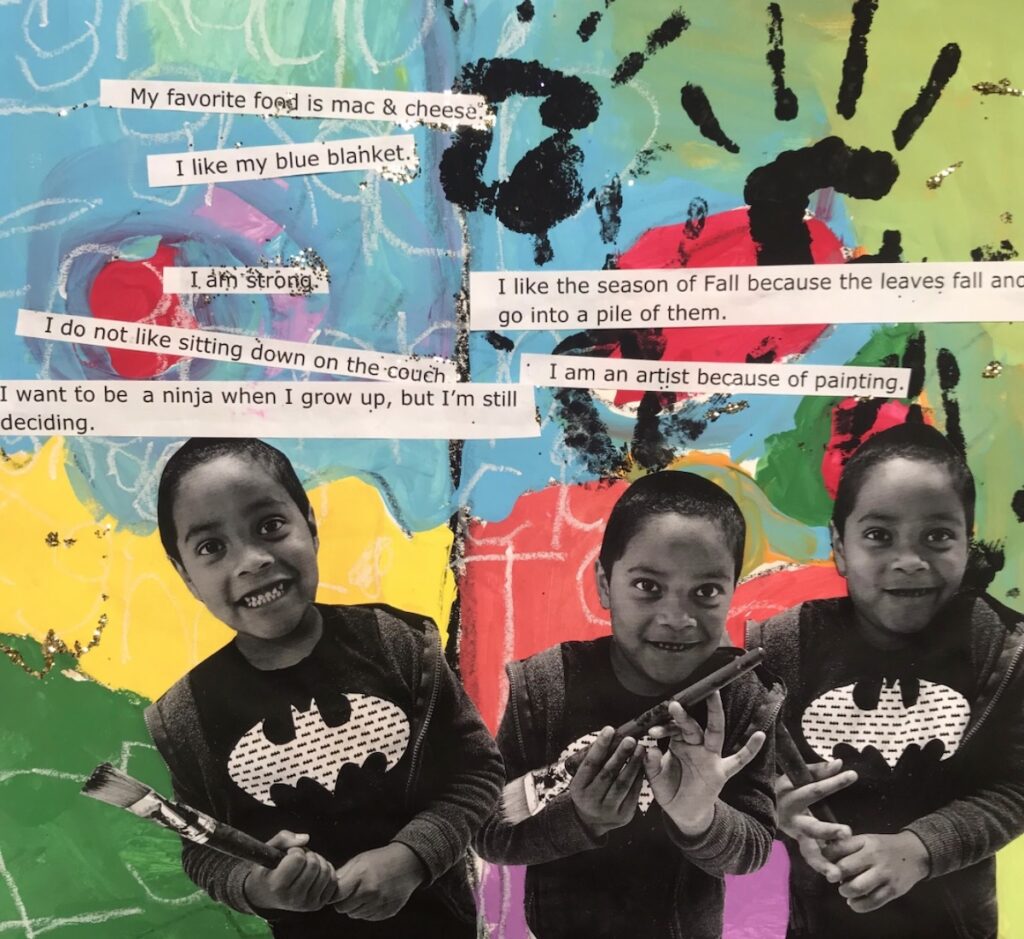
Some interview prompts may include:
- My name is _____.
- I like _____.
- I do not like _____.
- I like the season of _____ because _____.
- I want to be _____when I grow up.
- I wish _____.
- When I am at school, I feel _____.
- I am amazing because _____.
- My favorite color/animal/food is _____
- I am an artist because _____.
Be creative and feel free to add other prompts that might tell you more about your new upcoming artists!
Step 5: Add pattern
After the painting is complete, have artists practice different patterns in each shape with color sticks and oil pastels. Artists can also practice writing their name as a pattern, adding yet another sense of ownership to their art.

Step 6: Handprint
Using washable tempera paint and a small dampened sponge, have artists sponge their hand with paint and add handprints over their background. Buckle up because this can be a messy step! However, it’s the perfect photo opportunity to document how excited your students are in the art room. Display these process photos by the completed art display!
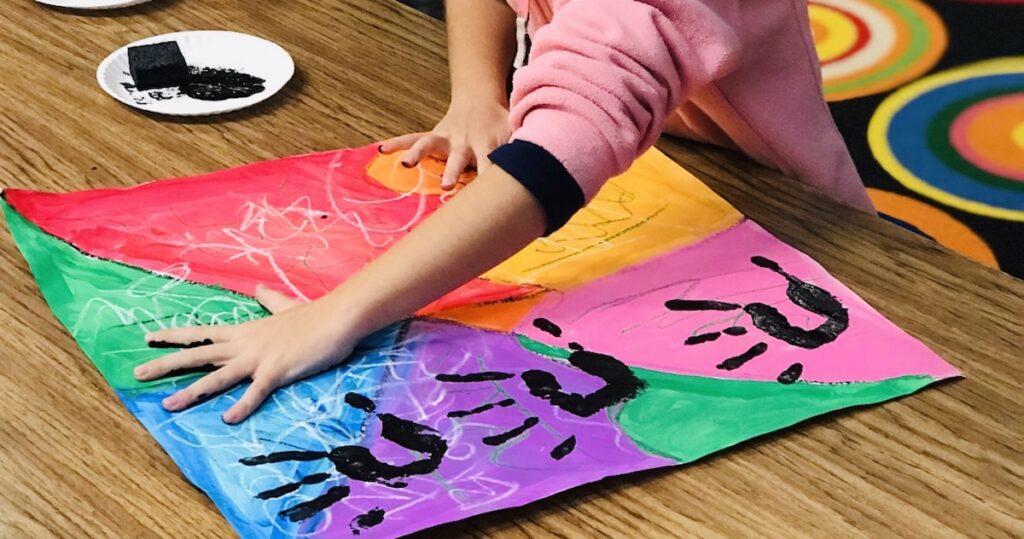
Step 7: Glue
Have artists glue their self-portrait pictures and sentences in an exciting composition to fill their space. Artists can add glitter details at the end if they choose. (Pro Tip: If you’re doing this lesson with a younger group of students, you may want to pre-cut their printed pictures and sentences and paperclip them to their painted background paper.)
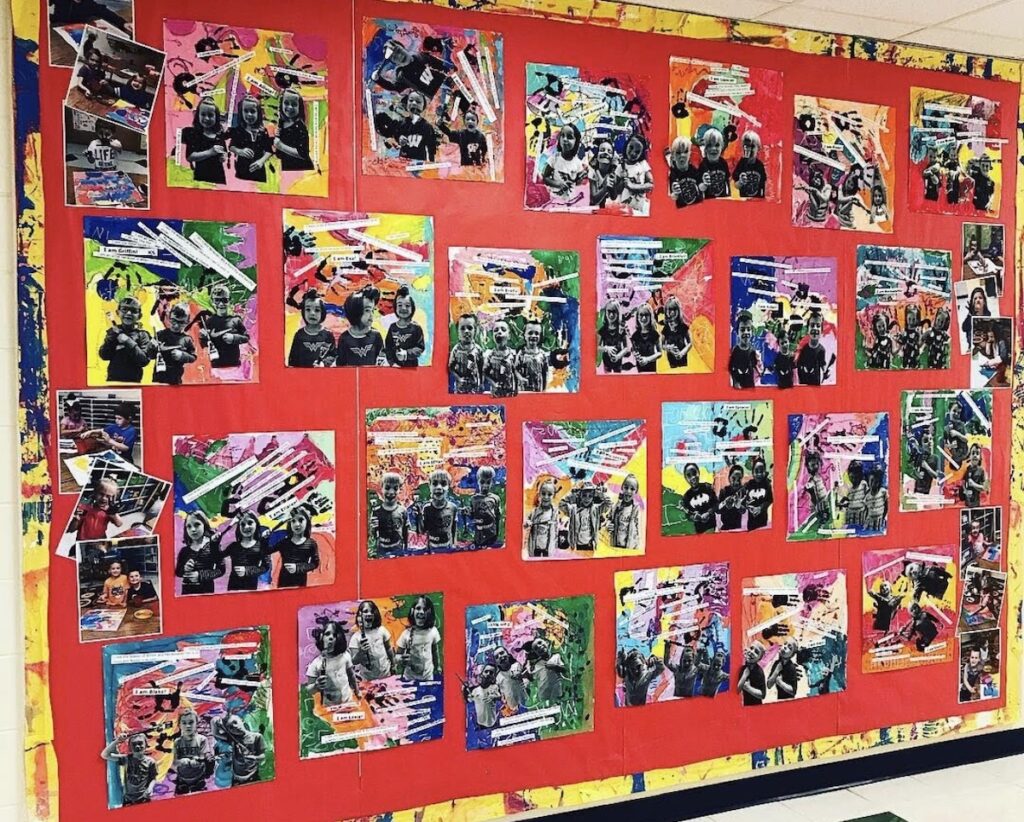
Getting to know the individual personalities of your students is vital as you set the tone for a fantastic year. Engage your kindergarteners with this activity and get to know them as they bloom in your art room. We hope you get to know your artists more through these colorful and expressive artist self-portraits!
What is the first project you do with kindergarten artists?
What other art materials could you incorporate in this type of mixed media artwork?
How might starting the school year with a self-portrait set the tone?
Magazine articles and podcasts are opinions of professional education contributors and do not necessarily represent the position of the Art of Education University (AOEU) or its academic offerings. Contributors use terms in the way they are most often talked about in the scope of their educational experiences.

